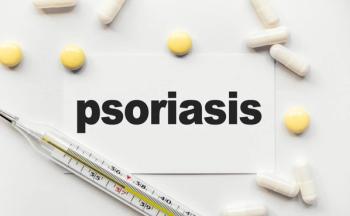
Small, Short-Term Study Suggests Benefits of Gentamicin in Junctional Epidermolysis Bullosa
If corroborated by longer-term studies, researchers argued the treatment could be a safe short-term treatment for patients.
Researchers published findings from a short-term study showcasing the potential of intravenous gentamicin for use in patients with junctional epidermolysis bullosa (JEB), an incurable, autosomal recessive disorder characterized by blisters and erosions of the
The small, open-label, nonrandomized
All patients had confirmed nonsense variants in LAMA3 or LAMB3 in 1 or 2 alleles and decreased expression of laminin 3220—an essential component of the dermal-epidermal junction. Data showed that all patients experienced increased expression of laminin 332 in the dermal-epidermal junction after treatment, which remained throughout the 3 months of follow-up. According to the researchers, this is the longest amount of time this outcome has been tested.
“It has been suggested that the amount of laminin 332 required at the DEJ to attenuate JEB symptoms may be a minimal percentage of that expressed in [normal human skin],” wrote the researchers. “In the current study, a single cycle of intravenous gentamicin was followed by increased expression of laminin 332. The increased expression of laminin 332 observed in the patients’ intact skin sites suggests that it could prevent future blistering and wounding.”
None of the patients experienced adverse effects during treatments nor did they develop anti-laminin 332 antibodies despite induction of laminin 332. However, the researchers did caution that the safety signals associated with long-term treatment with gentamicin—including ototoxic and nephrotoxic effects, autoantibody induction, and bacterial resistance—warrant further investigation.
Three patients received a low-dose of gentamicin at 7.5 mg/kg/day for 14 days and 2 patients received a high-dose of gentamicin at 10 mg/kg/day for 24 days. Seven of the 9 wounds in patients receiving low-dose treatment closed by at least 50% and all wound in patients receiving high-dose treatment closed by at least 50%. At the end of follow-up, 8 of the 9 wounds in patients receiving low-dose treatment and all wounds in patients receiving high-dose treatment closed by at least 85%.
“A noteworthy element of our study was the inclusion of 2 children with intermediate JEB (patient 1 [7 years of age] and patient 4 [10 years of age]). The relatively older age of these children allowed for an assessment of their disease-related emotions and functioning via the Skindex-16 survey,” researchers explained.
They continued, “after treatment, both children experienced improvements in their emotions (worry, frustration, embarrassment, and depression) and functioning (interpersonal interactions, showing affection, and daily activities) that was sustained up to the end of the trial period, indicating potential psychosocial benefits of intravenous gentamicin for individuals with this subtype of JEB.”
Three of the patients were evaluated by Epidermolysis Bullosa Disease Activity and Scarring Index, which objectively measures severity of disease in patients with epidermolysis. All 3 patients demonstrated decreases in total activity scores 1 month after treatment. By 3 months, one patient had scores that returned to those at baseline.
Reference:
Mosallaei D, Hao M, Antaya RJ, et al. Molecular and clinical outcomes after intravenous gentamicin treatment for patients with junctional epidermolysis bullosa caused by nonsense variants. JAMA Dermatol. Published online March 2, 2022. doi:10.1001/jamadermatol.2021.5992
Newsletter
Stay ahead of policy, cost, and value—subscribe to AJMC for expert insights at the intersection of clinical care and health economics.







































